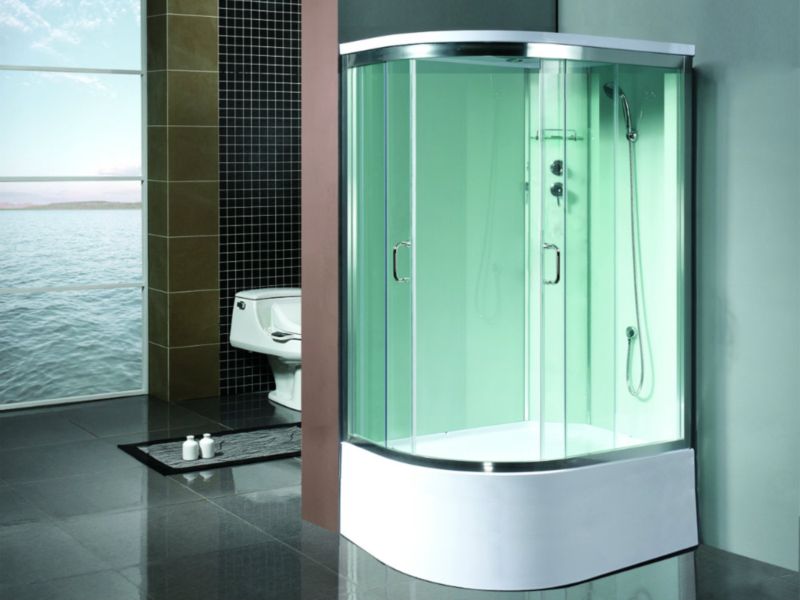What to make a summer shower from
At the dacha, a refreshing shower is just what you need. You can use a portable design. And if the shower is often used, then why not build something solid? Moreover, large material costs can be completely avoided with the right approach to the matter. So today we will discuss what you can use to build a summer shower with your own or someone else’s hands without breaking the bank.
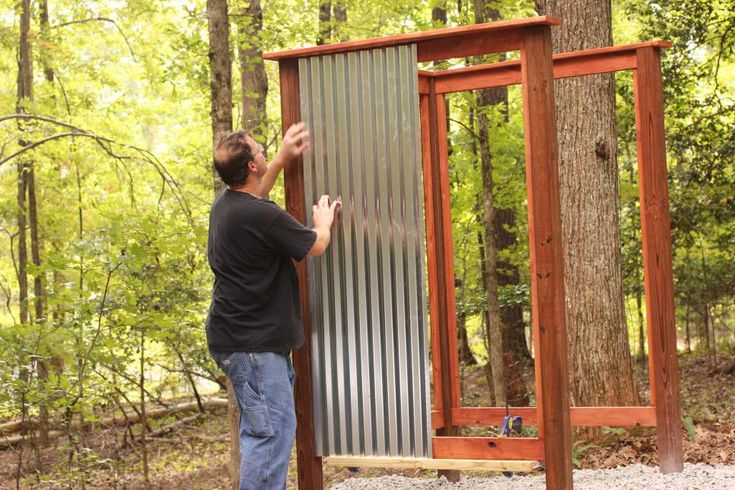
The content of the article
Operation Toptygin
Where does this name come from? The fact is that the described portable design is based on a foot pump, popularly called "stomper". The device with two tubes easily fits in a small plastic bag. The principle of the shower is as follows: a tube is inserted into a bottle, basin, bucket (any container) with water at a comfortable temperature, the pump is placed under your feet. After stomping on it, we get water pressure in the hose. A tube with a watering can is used for washing.
Since most likely not much water will be spilled during such a bath, there is no point in worrying too much about draining it.
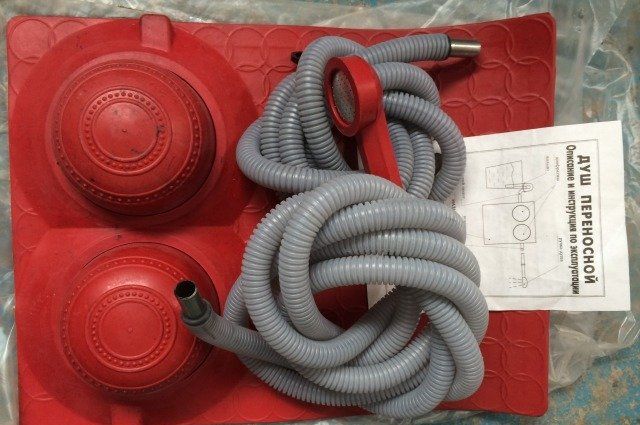
Stationary version of a summer shower
Here you can’t give up on water drainage; you’ll have to invent something. If there is a drainage pit in the latrine at the dacha, the issue is practically resolved, unless, of course, bacteria or reagents are used in the pit to process sewage. Since such additives require a certain humidity to work properly, the water must be diverted to another location.
For these purposes, if the soil has no problems with drainage, it will be suitable pit dimensions 70x70x70 centimeters. It is filled with fragments of brick, or even better with expanded clay. But if there are a lot of people who want to splash around in the shower, then the size of the pit needs to be increased accordingly.
If the site has sandy soil, it may gradually crumble into the hole. Well, yes, and here you can deceive nature. For example, by covering the upper part of the pit wall around the perimeter with boards.
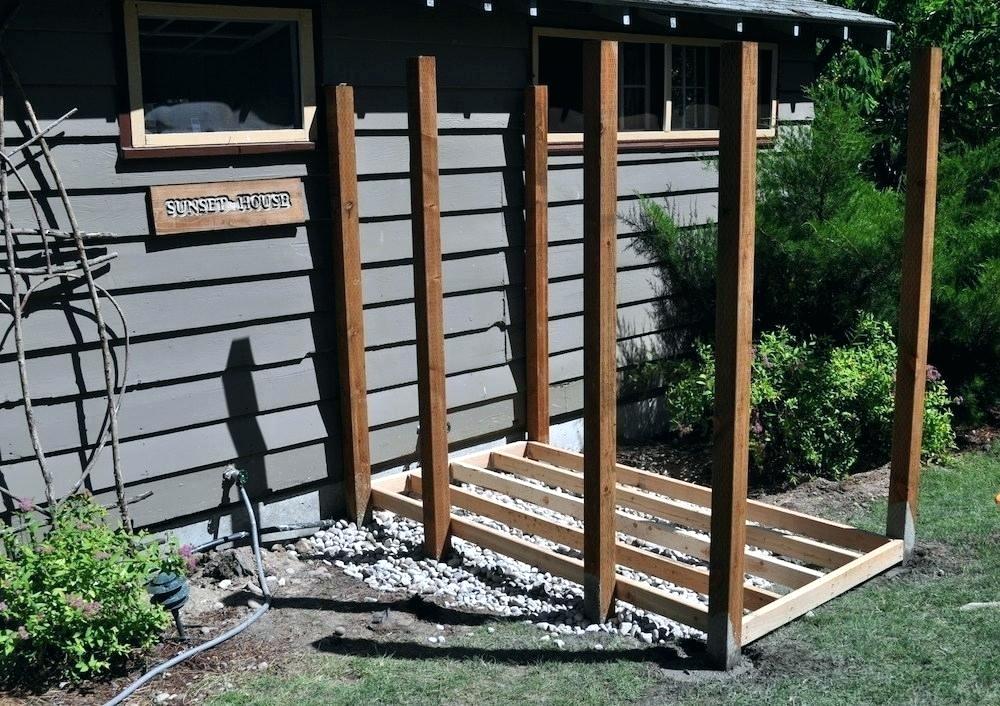
With a more serious approach, a hole is dug around the entire perimeter of the future shower room by 40-60 centimeters. Having chosen the soil, fill the bottom of the hole to the very top with filler such as crushed stone and expanded clay.
Shower base
The preparatory stage comes down to marking the site, and if corner posts are planned to be dug in, then dig appropriate holes from half a meter to a meter deep, depending on the scale of the construction. Also at this stage we are puzzled by the base for the lower trim.
We won't talk about strip foundations — it looked like they weren’t going to build a bathhouse. Yes, and it’s expensive both in terms of money and labor costs. Let's focus on the option with concrete pillars, or you can dig it into the ground building blocks. The task comes down to twenty centimeters lift the bottom frame frame off the ground. This is done in order to eliminate its contact with the soil. Otherwise, the bottom of the frame will begin to rot due to moisture.
Or you can use this option: lay paving slabs level in a row, and place the bottom trim directly on it.
Frame making
A relatively inexpensive and easy-to-manufacture frame is made from pine timber section 50x50, stand-up ones are taken 50x100 or 100x100 mm. Their thickness is adjusted depending on the capacity of the water tank and the massiveness of the entire structure.
The construction of the frame begins with the fact that concrete is poured into pillars dug into the ground in the corners of the proposed shower. The bottom of the stands, located in the ground, is pre-wrapped in roofing felt. After the concrete has set after a couple of days, they begin to attach the upper, central and lower frames to the pillars using self-tapping screws. The height of the frame must be at least 220 cm, and this does not take into account the size of the tank. That is, the stand ones are about 4 meters long, taking into account the meter in the ground and the size of the tank.
Another option - the bottom trim is done around the entire perimeter, and the stand ones are attached to it from above by means of a spike and an eye. I consider this design less reliable, since the concrete will hold much stronger than any tenon.
After tying, stiffening ribs are made; a cell can be made every 50-70 cm so that the structure is not completely flimsy. The frame can also be made from a rectangular metal pipe if you have a welding machine at hand.
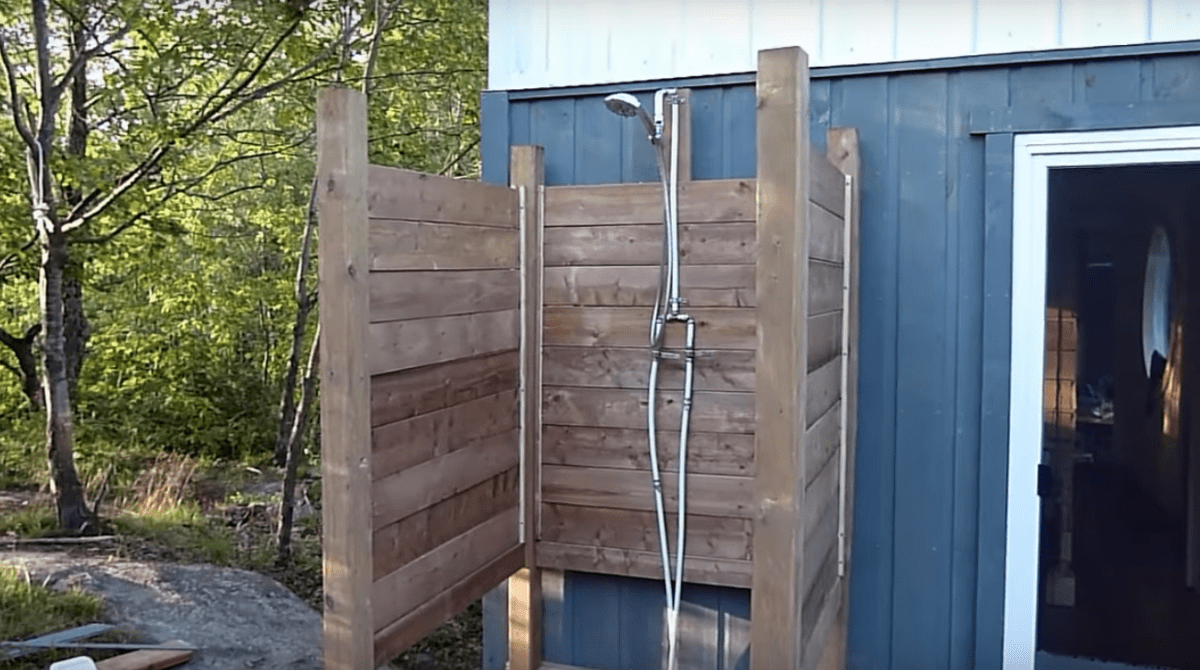
Before starting work, all frame parts are primed with an antiseptic, and for greater reliability - with a wood impregnation like "pinotex" or "ecolax". The service life of wood after such treatment will radically increase.
If we take it to the minimum, without any locker rooms or dressing rooms, the size of the shower should be at least meter by meter.
What to sheathe with
The rule here is simple: we follow the path of least resistance. The richer you are, the happier you are, as they say. The following can serve as cladding:
- wooden or plastic lining;
- profiled sheet;
- polycarbonate;
- slate;
- canvas fabric;
- and even oilcloth.
Depending on the durability of the material and weather conditions, it will last a certain amount of time.
Summer shower tank
A metal or plastic barrel can serve as a container, which, if it is no longer dark, should be painted with matte paint, preferably black. Plastic heats up worse than metal, but for the southern regions it will do just fine.
The best, but far from cheap, option is stainless steel tank. Ordinary steel rusts from contact with moisture, and you will soon feel it on your own skin. Therefore, it is better not to skimp on the tank.

For a family of 3-4 people, a two-hundred-liter container is enough. And large sizes, by the way, won’t really have time to heat up. If you equip the tank with electric heating elements, then the shower will no longer be summer and not cheap to operate.
A hose with a watering can comes out from the tank. Here, too, whoever can do what - you can either use a hose from a regular shower with a nozzle, or, as always, get creative.
A hose connected to the water supply system, if there is one, is connected to the tank. Be sure to provide a separate valve, so that you can safely turn off the water to the tank. For convenience and automation of the process, you can install a system in the tank similar to that in a toilet cistern (with a float). But don’t count on her too much - when you leave, close the valveso that there are no unpleasant surprises for you and your dacha neighbors.
Sewerage equipment
In a more or less serious shower you cannot do without drainage. There are two ways to go here:
- The first option is to install on the floor shower tray, and lead the hose out of it into the drain hole. Everything here is intuitive - here’s a hose, here’s a hole. The disadvantage of the design is that sooner or later the tray will become unusable, especially if it is acrylic, and those bathing in the shower do not strictly follow their diet.
- If you don’t want to bother with a pallet, then between the boards that will line the shower floor, you need to make a gap of 5-10 millimetersso that the water goes into the ground on its own. I have already described how to install a summer shower directly above a drainage pit filled with expanded clay; I have already described how to equip it.
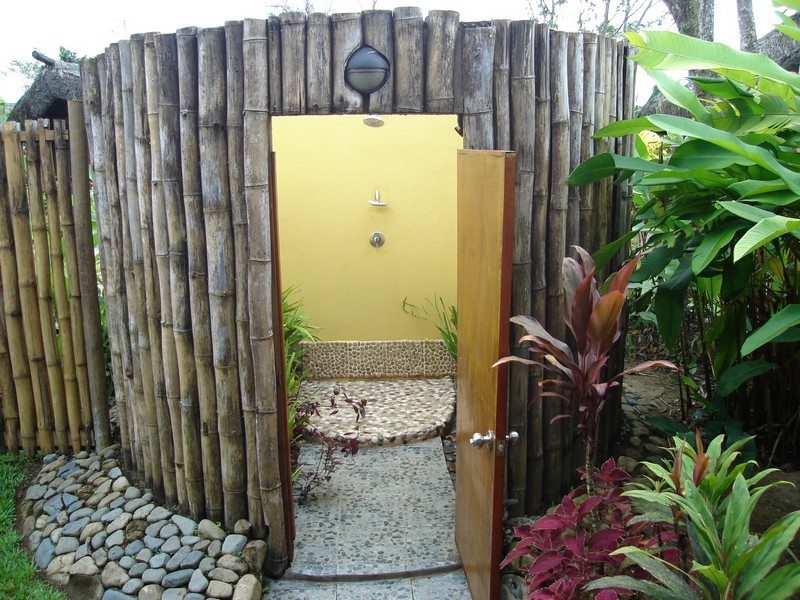
Instead of the unsightly shack I described, you can build a shower room out of brick, or, as in the picture, out of bamboo. But this is already quite costly and troublesome. If you have time, desire and money - please. Then it makes sense to make a dressing room in the room, put windows and doors in it, equip a locker room and benches. You can even supply electricity, make lighting and put a refrigerator full of beer.




